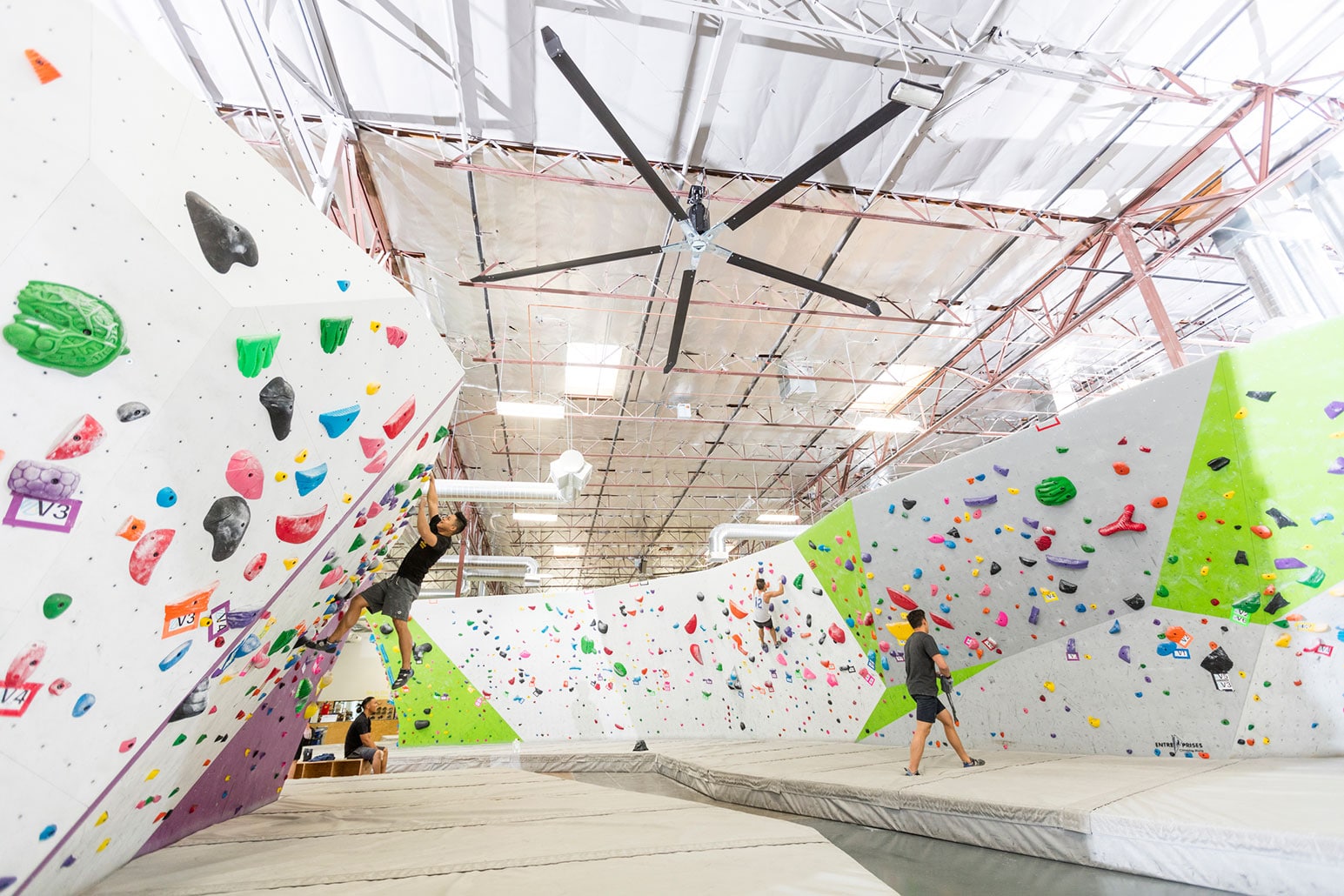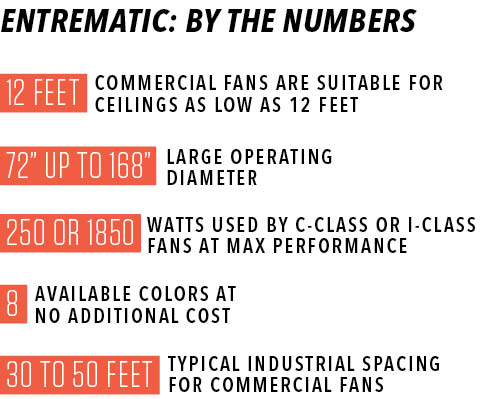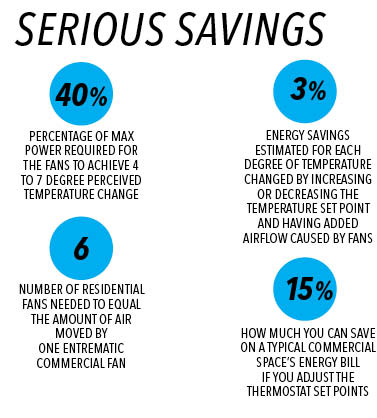
Origin Climbing & Fitness Center in Las Vegas utilized Entrematic fans. [Photos: Courtesy of Entrematic]
You may not always think to notice, but look up at the ceilings of countless major retailers, athletic facilities, and even warehouses and you’ll undoubtedly see sleek, often colorful, five-blade fans spinning overhead. They keep you cool and comfortable without overwhelming a space or its occupants. These are the clever engineering of Entrematic, the company that has reinvented the HVLS (high-volume low-speed) fan in the last decade.
“From 2010 to 2012 the industry hadn’t really innovated,” says Richard Hoofard, director of engineering at Entrematic. “There were a couple of companies and they were the only ones in the race… We felt there was an opportunity for us to come in and innovate.”
Entrematic took a fan that was similar in nature and optimized it for the environment, improving its performance efficiency and energy consumption while also giving customers more options. But just how is Entrematic’s HVLS fan better? These are the facts.
FROM OUR JULY+AUG 2018 ISSUE

Why it’s Special
The heart of Entrematic’s fan is its unique spinning component, which the University of Texas at Arlington’s aeronautical engineering group helped them develop. “The whole design of this fan closely mimics the design of a helicopter,” Hoofard says.
Downturned Wingtip
This promotes airflow efficiency, funneling turbulent air away. “Early helicopter blades had a flat end, but they found that as the blade moves it lifts, so the tips fly up,” Hoofard says. Entrematic’s blade was designed to be relatively stiff, and they wanted the blade to stay as horizontal as possible without flexing throughout operation. They added downward winglets to reduce the wingtip vortice, allowing the blades to keep moving air down.

Helicopter Blade Theory: 5 Blades
To produce the most efficient fan, Entrematic used “helicopter blade theory” and an odd number of blades. Hundreds of hours of testing and computer modeling revealed an odd number of blades is more efficient and less costly to operate. Conversely, competitors’ HVLS fans have an even-numbered blade configuration, causing more turbulence and less efficiency.

[Photos: Courtesy of Entrematic]

